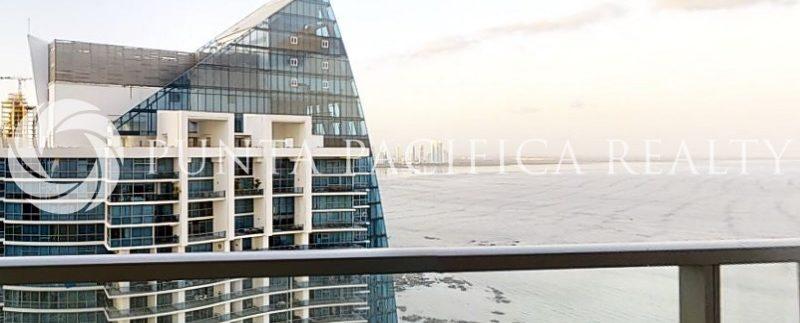Trump Ocean Club: The Good, Bad and Ugly (Part 1)

(The Trump Ocean Club changed the fundamentals of Panama City real estate, creating an international icon and attraction for global real estate investors. But it has also generated controversy, heartache and sensational headlines. In the first installment of a series on the Trump, Punta Pacifica Realty Managing Director Jeff Barton explores the history of the Trump Ocean Club and its impact on Punta Pacifica.)
From my first visit to Panama in 2006 I was captured by the pristine beaches, rich culture and the growth that awaited this barely-developed country. Panama was full of promise and prosperity!
Soon it was clear to me the glitzy Panama City real estate market was a great opportunity; however, it was also a land of unscrupulous developers, get-rich-quick real estate agents and limited factual sales data. Much like the famous plot of the 1966 film, The Good, the Bad and the Ugly, where scoundrels chased fortunes in buried gold, investors and developers seeking good fortune in the untapped land of third-world Panama.
The consequences of the Gold Rush were substantial to the development and civilization of the western part of the United States, in both good and ugly ways. In Panama City, the gold rush centered on the Trump Ocean Club, the iconic tower that was a game changer for the Panama property market. With its distinctive sail-shaped architectural design, the impact of Trump Ocean Club helped open the frontier to mainstream investors and business development.
In 2006 when the announcement that the Trump Hotel Collection was opening a property in Panama, an astounding effect took place. Investors from around the world began to take notice, and the beginning of the real estate boom was born in this small Central American country. Investors began arriving to Panama in droves based on the premise that Donald Trump knew how to smell opportunity and there must be more!
However, many naysayers were doubting a Trump resort would be able to sell, and at prices that were double what other new condo projects were asking. There was also skepticism that the required $220 million construction money could be raised to fund what would become the largest building in Latin America; and that the actual construction of such a difficult sail-shaped architectural design could be achieved in Panama.
In the end the naysayers nearly won. Yet the Trump Ocean Club proved resilient, and not only achieved the 60 percent sell-out required to go to market for construction financing, but did so at double and sometimes triple the prices of adjacent buildings.
Trump Ocean Club broke ground in 2007 in the small residential peninsula known as Punta Pacifica, which at the time appeared more like a war zone populated with cranes than the beginnings of an upscale enclave with more than 18 residential towers in development. The average price for a luxury apartment in the Trump development rose from the pre construction $3,500 per square meter to $5,500 per square meter two years later at the peak of the boom in 2009. The buildings adjacent to Trump took advantage of their proximity, and changed their sales strategies as well; promoting the increased value of “rubbing elbows” with The Trump.
The Rush was on and Panama would soon become one of the fastest growing countries economically; attracting such international hotel brands as Yoo, Hard Rock, The Waldorf Astoria and Ritz-Carlton.
The optimistic desired to get rich quick, and capitalized on the upward pricing trend that resulted in inflated real estate prices. Investors believed great profits could be made by placing deposits on condos, sometimes two or three at a time, and then flipping them before having to complete the purchase, or be asked to close.
However, real estate bubbles end, and they end ugly. Panama was no different than Miami, Las Vegas, Dubai and the other boom cities of international property. What happened? Eventually the flippers ran out of other flippers to unload their properties, and as the conditions of the market changed, investors were forced to close or sell at significant losses. The value of everyone’s property began to tumble even faster than it skyrocketed. Like elsewhere before the fall of Bear Stearns and the Great Recession, the drive for greed was no different in Panama.
The bubble did indeed burst in the Panama market; including the Trump Ocean Club (which had more than doubled the sales of any other building) when buyers were notified to close early on their properties in 2011.“Honey we just got a notice to close on that Trump property in Panama. What is this about? I thought we were going to flip it years ago? Now what do we do?” A building with more than 900 preconstruction sales agreements completed its closing process a year later in 2012 with less than 500 closed sales and a resulting default on the $220 million construction bond issuance.
In May of 2013, an agreement was reached to restructure the construction loan, providing the developer, Newland International Properties, with an extension of three years to repay the debt in 2017. So far in 2014 Newland has generated more than the required sales to make principal and interest payments totalling more than $50 million. As a result, there has been aresurgence of investors feeling more secure about future pricing trends; they are contacting us daily in hopes of finding the last distressed deals.
Throughout all of the controversy surrounding this high-profile property, Trump Ocean Club is still the most sought-after building to live in Panama City; demanding and receiving rental rates more than 50 percent higher than its direct neighbors and achieving the highest price per square meter sales prices in Panama. With Sun International just weeks away from opening it’s $100 million casino at Trump Ocean Club — and the next $32 million payment staring the development in the eyes — what will be the next chapter of the tale for existing and potential investors?
Next in the series: “What is the future of Trump Ocean Club and Panama real estate?”
Jeff Barton is the Managing Director of Punta Pacifica Realty, the leading sales and property management company in the exclusive waterfront skyscraper neighborhood of Punta Pacifica.

